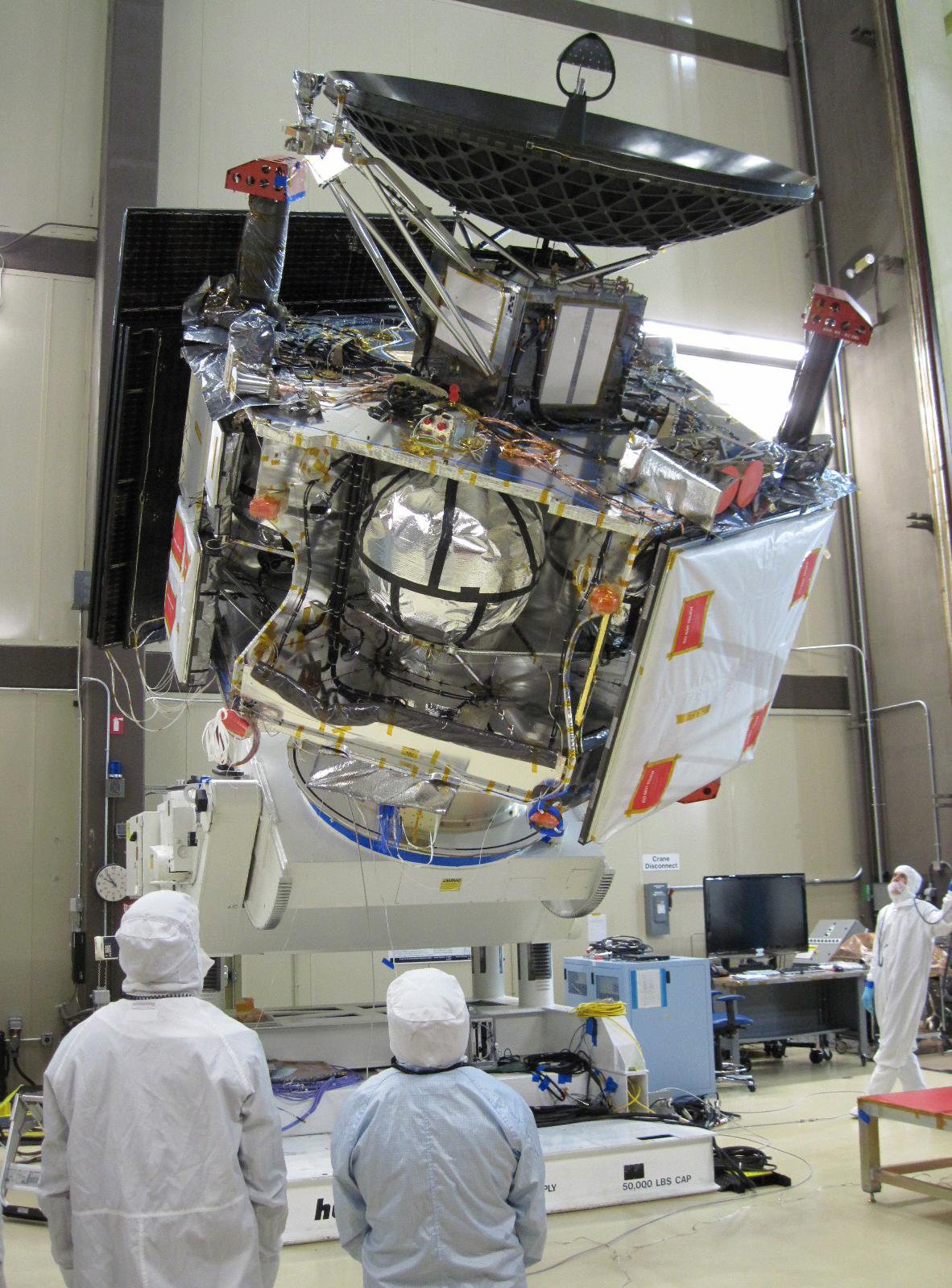
This image of Ganymede was obtained by the JunoCam imager during Juno’s June 7, 2021, flyby of the icy moon. Credits: NASA/JPL-Caltech/SwRI/MSSS
Posted on 06/08/2021 9:07:35 PM PDT by BenLurkin
The spacecraft flew closer to Jupiter’s largest moon than any other in more than two decades, offering dramatic glimpses of the icy orb.
The first two images from NASA Juno’s June 7, 2021, flyby of Jupiter’s giant moon Ganymede have been received on Earth. The photos – one from the Jupiter orbiter’s JunoCam imager and the other from its Stellar Reference Unit star camera – show the surface in remarkable detail, including craters, clearly distinct dark and bright terrain, and long structural features possibly linked to tectonic faults.

This image of Ganymede was obtained by the JunoCam imager during Juno’s June 7, 2021, flyby of the icy moon. Credits: NASA/JPL-Caltech/SwRI/MSSS
“This is the closest any spacecraft has come to this mammoth moon in a generation,” said Juno Principal Investigator Scott Bolton of the Southwest Research Institute in San Antonio. “We are going to take our time before we draw any scientific conclusions, but until then we can simply marvel at this celestial wonder.”
Find out where Juno is at this moment with NASA’s interactive Eyes on the Solar System. With three giant blades stretching out some 66 feet (20 meters) from its cylindrical, six-sided body, the Juno spacecraft is a dynamic engineering marvel, spinning to keep itself stable as it makes oval-shaped orbits around Jupiter. Credit: NASA/JPL-Caltech
Juno mission expands into the future
Juno detects ‘Sprites’ and ‘Elves’
All about Ganymede
Using its green filter, the spacecraft’s JunoCam visible-light imager captured almost an entire side of the water-ice-encrusted moon. Later, when versions of the same image come down incorporating the camera’s red and blue filters, imaging experts will be able to provide a color portrait of Ganymede. Image resolution is about 0.6 miles (1 kilometer) per pixel.
In addition, Juno’s Stellar Reference Unit, a navigation camera that keeps the spacecraft on course, provided a black-and-white picture of Ganymede’s dark side (the side opposite the Sun) bathed in dim light scattered off Jupiter. Image resolution is between 0.37 to 0.56 miles (600 to 900 meters) per pixel.
 This image of the dark side of Ganymede was obtained by Juno’s Stellar Reference Unit navigation camera during its June 7, 2021, flyby of the moon. Credits: NASA/JPL-Caltech/SwRI
This image of the dark side of Ganymede was obtained by Juno’s Stellar Reference Unit navigation camera during its June 7, 2021, flyby of the moon. Credits: NASA/JPL-Caltech/SwRI
“The conditions in which we collected the dark side image of Ganymede were ideal for a low-light camera like our Stellar Reference Unit,” said Heidi Becker, Juno’s radiation monitoring lead at JPL. “So this is a different part of the surface than seen by JunoCam in direct sunlight. It will be fun to see what the two teams can piece together.”
The spacecraft will send more images from its Ganymede flyby in the coming days, with JunoCam’s raw images being made available here.
The solar-powered spacecraft’s encounter with the Jovian moon is expected to yield insights into its composition, ionosphere, magnetosphere, and ice shell while also providing measurements of the radiation environment that will benefit future missions to the Jovian system.
More About the Mission
JPL, a division of Caltech in Pasadena, California, manages the Juno mission for the principal investigator, Scott J. Bolton, of the Southwest Research Institute in San Antonio. Juno is part of NASA’s New Frontiers Program, which is managed at NASA’s Marshall Space Flight Center in Huntsville, Alabama, for the agency’s Science Mission Directorate in Washington. Lockheed Martin Space in Denver built and operates the spacecraft.
More information about Juno is available at:
https://www.nasa.gov/juno
https://www.missionjuno.swri.edu
Mosied?
It did the exact opposite for me. The seemingly limitless and infinite distances and size of objects such as galaxies, *never* cease to amaze me.
IKR! It is absolutely mind-boggling. I read with amusment articles about the possibility of achieving speed-of-light capabilities. Big deal! They’re going to need a greater magnitude of understanding to even perceive the actual distances involved. The speed of light is not even equivalent to the speed of an ox-drawn cart.
It seems like we’re not able to comprehend the grand plan. Thinking of infinity makes my brain melt. Just like tcp/ip does.
Yes “Mosied”. “Motsied” is part of a Hebrew prayer thanking God for what he has given us, such as Bread, water, etc. re eating.
For man, interstellar travel in the future won’t be done with traditional rocket designs crawling at light speed. It will take something a bit more creative.
I don’t sweat the interstellar travel part for humans. It’s not going to happen for a looong time. However, traveling within the Solar System quite possible and has already been accomplished by our unmanned spacecraft.
Moseyed?
Orbited
INteresting, the ines seem to be survace “wrinkles” of a plaible thin crust , rather than tectonic based fault lines.
Could be just ice, melted temporarily and then frozen into parallel ridges?
Or someone was turned loose with a thousand bulldozers all going in a smiliar direction.
whizzed past....
Oops.. Whizzed passed.
Motsied?
That sounds Yiddish.
Moseyed sounds more western.
All the thinking that had to be done to get this space craft into that orbit is mind-blowing. Props to the engineers who made it happen. People are amazing.

Juno spacecraft: Technicians prepare the Jupiter-bound probe for a round of testing that simulates the vibrations the spacecraft will experience during launch. This image was taken on November 22, 2010, in the high-bay clean-room at Lockheed Martin Space Systems in Denver.
It’s in black and white?
Disclaimer: Opinions posted on Free Republic are those of the individual posters and do not necessarily represent the opinion of Free Republic or its management. All materials posted herein are protected by copyright law and the exemption for fair use of copyrighted works.